For the innovative Jay White of White Engineering, it’s all about the drag (and more).
When conversing with Jay White of White Engineering, the listener is immediately captivated by what he has to say, not only because the subject matter is fascinating, but also because White has a genuine knack for talking about it. A former NCAA skier at Oregon State, White graduated in engineering physics, then went to work in a Portland, Oregon sporting goods store. “It’s what everybody does when they get out of college after four years,” White deadpans. In actuality, it was a high end ski shop where he purchased a lot of racing equipment while also coaching his last year at OSU. As a result, the engineer took a decided interest in the human foot, primarily, how to better fit a ski boot.
Hampered by a snow drought in the late 1970’s, White had time on his hands, so he developed a computerized ski boot fitting capturing 3D pictures of feet. This led to the founding of Foot Image Technology in partnership with Hewlett Packard. “We took their document scanners and made them foot scanners,” White recalls, “recommending ski boots across North America and Australia.” This fostered an interest in sport body data capture which led to a project with the Australian army scanning 5000 soldiers from the knee down and developing an army GP boot. He then went to work for Adidas special projects, where then vice president Robert Erb hired White as a special consultant on customized athletic shoes for Notre Dame and Tennessee football, as well as former Celtic Antoine Walker and Lakers great Kobe Bryant.
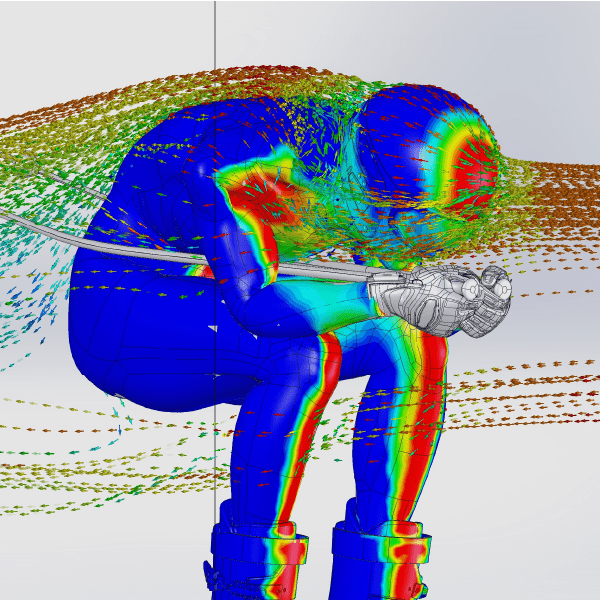
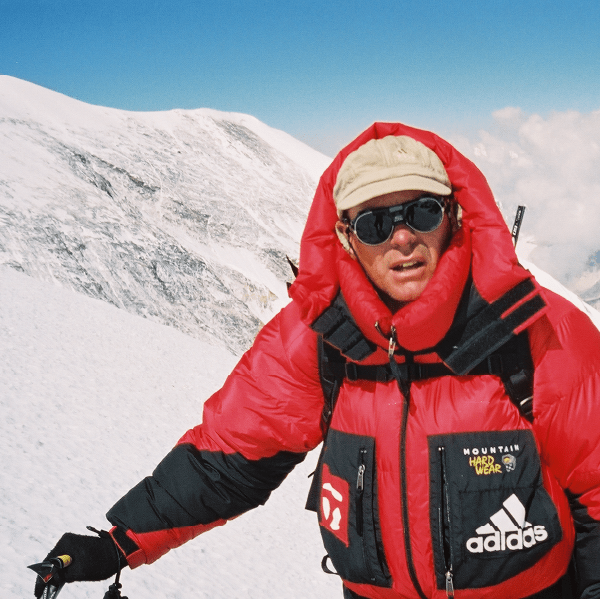
After a while, White began hitting golf balls off of various summits (including Mount Everest) sponsored by TaylorMade, Adidas, Woolrich, and Solomon. “Just clowning around, climbing” he says. “But I had to have something that would help me pay the bills as all climbers do.” A five year stint at TaylorMade began in 2000 where White worked with golf ball flight. He also developed hardware cameras for the company’s motion capture system. When TaylorMade execs moved to Fila, they brought White along, putting him on their Fila Adatto custom shoe project. “You'd walk into their store on 5th Avenue and we’d 3D scan your foot,” White recalls. “Select three different insole thicknesses, five different arch pieces, two different fore foot pieces, two different heel pieces, and in ten minutes, cobble together a custom shoe for you. It went worldwide, so I was traveling all over.”
Eventually, White went to work for Natural Point, the largest producer of motion capture equipment based in Corvallis, Oregon. This took him inside a wind tunnel at Scottsdale Cycling Specific where he worked with United Health Care, as well as sponsored and unsponsored athletes alike to help them achieve optimal cycling aerodynamics.
White designed all wind tunnel balance components (load cells, rotating motors, stepper motors, ultra-fast camera systems) which measure the rider in micrograms within the airflow. By 2012, he and his team determined that wind tunnels were akin to “hitting aerodynamics with a sledgehammer.” He wanted to know how much drag was on the athlete’s foot and knees or how a helmet texture impacted drag. “The tool for that is computational fluid dynamics (CFD),” says White. “Most of those using aerodynamics for athletes would truncate a cylinder for the forearm, a sphere for your head, poke on their helmet and the bike would be horribly tubular. We wanted to get absolute perfect models of bodies, which are avatars for athletes that move like athletes, look like athletes, wear shirts, pants, shoes, buttons, etc. and the bike is going to be like a Specialized Tarmac with the derailer, chain, and all—not a helmet on a stick figure.”
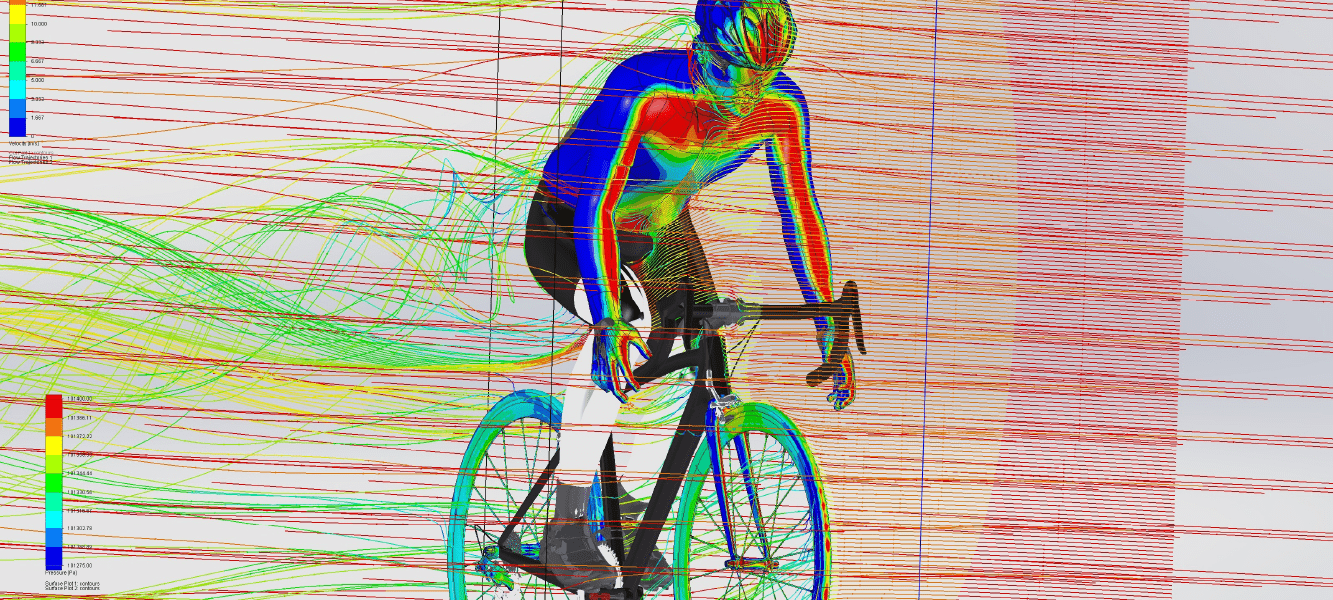
A hundred grams of drag reduction = one second per kilometer on the bike. This is irrespective of velocity. “If you're at 30 miles per hour like Mark Cavendish and you're competing in the Tour de France, you're going to travel that kilometer one second faster, “says White. “So if a helmet signature in a 12K time trial is reduced one hundred grams, you're going to be 12 seconds faster. That helmet modification moves you from third to first place. We're hunting 20 grams or so, and you can’t detect that in a wind tunnel. Impossible.”
The hunt for reducing grams also involves textures, which are all velocity specific. Paint, (gloss or matte finish) for example, adds texture to the Oakley helmet and how one buries that paint at 30 miles per hour, can result in anywhere from eight to 22 grams less drag. White can also recommend helmet decals that provide changes for a particular velocity zone. “If I can do a simulation quickly enough,” he says, “a consumer can send a video of themselves and a bike, and we can position the avatar from it. You ride a Specialized Tarmac and wear an Oakley AR05 at 17 miles an hour. What decals should you have? If I can kick that out in 20 minutes, then I don't have to charge you $500 for a CFD. Based on my data, I can tell you to buy a $100 decal set from Oakley and you're good to go.”
White and his team house a database of thousands of avatars (and can easily create new ones) which is why manufacturers like Oakley, Red Bull, and Schutt, have taken notice. Now he produces simulations (with a BOXX APEXX S3 workstation) for elite athletes like cyclist Mark Cavendish and former Olympic skier Linsey Vonn. With the fully functional athlete avatar, White can do real simulations with CFD, hydrodynamics, and thermodynamics based on how an athlete is moving and match all of that data back to the real athlete. The numbers coming across are not actual, but they do follow actual numbers to the account that the deltas between these two positions are exactly what they’ll see on the road, in the surf, on the football field, etc.
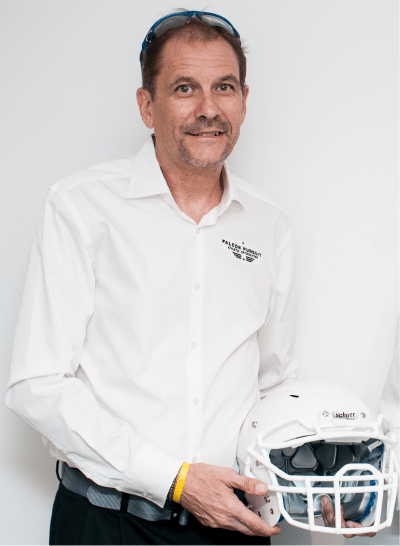
Speaking of football, Robert Erb came calling again in the fall of 2018 with a project designing new Schutt football helmets—but it got off to a rocky start. “Legal said I couldn’t use a non-contact scanner because somebody else claimed that they owned it,” White recalls, “so I had to create a contact scanner. I walked out of the room the last week of October, called my guys and told them we had to make a helmet in order to take measurements. Could we do it? Yep. When do we have to have this? For the AFCA show the first week of January, 2019. Nobody can do that, but my guys did. We came up with a very good system with roughly 12 sensors in a UR1-FC football helmet. UR1 is the actual helmet shell and FC means ‘full contact.’ It's a measurement device with servo motors inside. They pull the arms out of the way because many football players have rather interesting hairdos and the non-contact scanner can’t see through all that hair. What we developed is a full contact one where the servo is retracted. You put the full contact on, you hit a software button, arms come up, they reach through your hair and they measure your head. Now if you just took those measurements and tried to fit a helmet, you're not going to do very well because there are actually 20 fit locations where you can put pods. So we take that data and we use it to find the closest avatar, which is the closest actual football scanned head in our 3D database that matches those measurements.”
Next, White virtually inserts that 3D head into the Schutt helmet and selects pods to put pounds per square inch on the head. A computer is necessary because pods come in three different thicknesses: 11, 17, or 22 millimeters, as well two different densities: technically soft/squishy or firm/ less squishy velocity sensitive foam. Like a Tempur-Pedic mattress, push rapidly and it resists a lot, push slowly and it takes the shape of your hand. The velocity with which you hit it determines how quickly it moves.


“Whenever you put a nonlinear changing device on an athlete, his perception of pressure is going to change from the first second until it’s settled on his head a minute or two later,” says White. “We had to predict how he's going to feel a minute or two later by taking 12 measurements on the head and inserting 20 pods. It’s computationally intense because there are 3.69 quadrillion possible combinations and a couple of 10,000 practical. A practical is not putting an A thickness right next to a C thickness pod because your head surface doesn't have marbles in it. It's more of a smooth, organic surface. We're developing a science that will predict what pressure the athlete's going to want and allow him to grab a slider and move it to what he really likes. Some like a super tight helmet, but any athlete who's putting on a garment is going to want it to fit tight, whether it's gloves or helmet because they want it as an extension of their body. The U.S. women's soccer team shoes are extremely close to their foot—undersized. Why? Because if the leather hits the ball and then there's a void and then there's a foot, then you're not getting as much snap on the ball.”
In comparison, football players don’t want the helmet to jiggle on their head, especially when tackling, which results in additional forces. If they absorb an impact to the head and the helmet shifts to the side, they can't see the ball. What White describes is incredibly straightforward—the sizing of the helmet, however, due to the possible combinations and the detailed process involved in pressure mapping the athlete, it’s also extremely intense. There exist other important football helmet corollaries which involve aerodynamics (reducing that crucial 40-yard sprint time) and thermodynamics (keeping the football player’s head cooler to avoid heatstroke), but so much of it boils down to comfort. “A comfortable athlete is a happier athlete,” White says, “and a happier athlete performs better.”

Due to the fluid movement advantages of 3ds Max, White builds his models using the software and then, with the help of a special conversion engine, converts them into SOLIDWORKS forms. As the models go in, White says they get stacked like an “old fashioned rotoscope”, and that is how he makes SOLIDWORKS move. In addition to these applications, White Engineering relies on its own software, ARE (avatar rendering engine) which takes 3D-imaged athletes and makes them into a movable FBX avatar. It looks, moves, and has bone structure just like the actual human athlete, right down to blinking eyes. They also employ tools from nPower which takes the images from elemental space (triangles and polygons) into sub-D surface modeling in SOLIDWORKS. The engineers also run multiple simulation engines.
The team’s biggest workflow challenge is the aforementioned conversion since with their Dell workstation typically took an hour to convert a model. Bringing in four or five models in different leg positions could require an entire day. Time is money. White emphasizes that the Schutt football helmet is designed to work with any individual athlete, from high school to pro. “You don’t have to be Tom Brady to afford one of these,” he says, “so it's very punishing if I have an expensive delivery system to create the avatar because that ultimately increases the helmet’s retail price. The simulations have to be wonderfully brisk. They can't take up to two hours on a computer because that would just kill us. That’s why my BOXX system is so important.”
When White began searching for a better computer, an online search led him to BOXX and ultimately, to BOXX performance specialist Bud Wainright. “Bud is unique,” says White, “because he treats a guy who is going to buy one or two computers every year like I’m Lucasfilm. I get that same level of attention and I appreciate it. Another thing that swung me was Bud succinctly said, “Jay, you're not buying a CPU and chips. You're buying a heat management system and within that, your chips are going to run.’ I watch it every day displayed on a 65 inch 4K flat panel. It’s always at 4.97 when all 18 cores are going for hours. That's the value I wanted. The Dell would kick up for a few microseconds to 3.8, 3.9 and fall back to 2.2 as it finishes in the next two days. It doesn't take a genius to figure out that 2.2 is half as fast as five, right? If you're going to spend money on a chip, but can't run it cool, why spend the money?”
Workstations
Simple mesh: Cyclist at 10 degrees wearing Oakley helmet
Simple mesh: Cyclist at 10 degrees wearing Oakley helmet
Dell processing time: 30 hours and 44 minutes.
BOXX processing time: 7 hours and 43 minutes.
Isolation Study (final helmet study)
An isolation study has five million active cells. It’s the same helmet on the same cyclist, but instead of just asking for overall drag, White asks for the drag on the helmet separately and contributory to the drag on the body. Bottom line:
Dell processing time: 30 hours and 44 minutes.
BOXX processing time: 7 hours and 43 minutes.
When asked about legendary BOXX Technical Support, White mentions how certain SOLIDWORKS simulations failed to load on their baseball simulation computer. Mechanical simulation engineer Loren Stowe, who White refers to as “a brilliant guy,” called BOXX support on a late Thursday afternoon and was prompted to supply his screenshots. White was surprised that Stowe didn’t have to travel through the drudgery of a Dell-like series of tech support steps. Instead, the BOXX expert replied, “It sounds like you have a bad card.” Because it was so late Friday, the tech overnighted a new NVIDIA GPU which arrived Saturday and resolved the issue. “BOXX took ownership,” says White. “They didn't drive us through all that or ask us to over-document. They believed what we told them.”
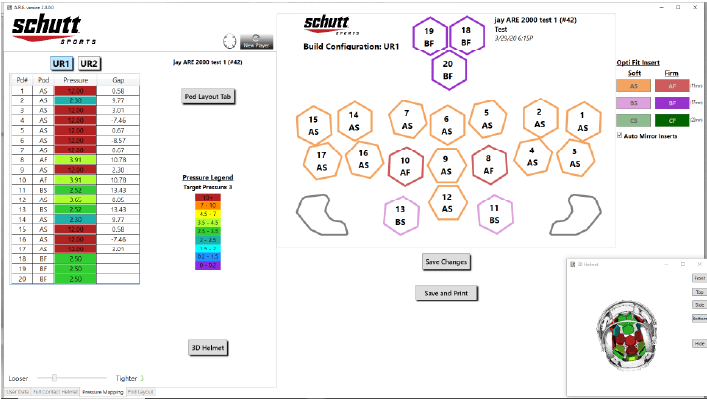
White Engineering is now moving into what White refers to as “deployable mode.” Even though they are not there yet, White wants Schutt to use GoBOXX laptops when they visit high school and college football programs. He would like them to show the athletes his simulations. “When we start those presentations at the next level, which is customizing, says White, “I want it in a reliable format, and that requires computational power. At Surf 2020, I want Red Bull to be carrying GoBOXX so that they can quickly pre-process the video that they're getting to me and kick it back to my AI source, which runs on the BOXX. When Oakley takes us out to the Tour de France and a cyclist whizzes past them and they want to do dynamic aero analysis based on the video of that athlete, I want it to go from France to me and back to France as quickly as possible. The more pre-processing power I can put in their hands, the better.”
For Jay White, that's where this all goes. The next level is a guy standing alongside the road, at the pool, at the velodrome, at the football stadium asking, “How can you make my athlete faster, more comfortable, cooler, etc.?”
Jay White has the answers.
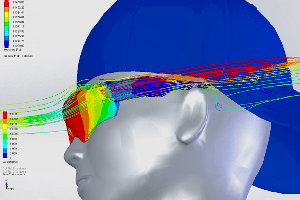
“At 5pm, the design arrives from the Oakley design team. They have all attended my aerodynamic school, so we share a common vocabulary and understanding of CFD colors: Red signifies high pressure, blue is low pressure, red—high velocity, blue—low velocity. I have to make the design flow-ready and put it on the athlete in multiple positions.
I run a zero degree and a 10 degree on the hoods (hands are on the bike gear shift levers) and drops (hands on the horns low). Two different body positions. That totals four different simulations I have to run on the new design so I can compare it to a previous design and each of the baseline designs. I work those through on my BOXX and get up throughout the night to check data, balance it, and make sure all meshes are correct.
At 8am, I go for my bike ride, arrive back at 9 and until 10am, compile the data, put it in spreadsheet form, and deliver to Oakley by 11am for our noon meeting There are 29,000 to 140,000 active cells on the cyclist and that roughly translates into every square millimeter of him. If I can't get those four simulations out on time, I'm toast.”
-Jay White